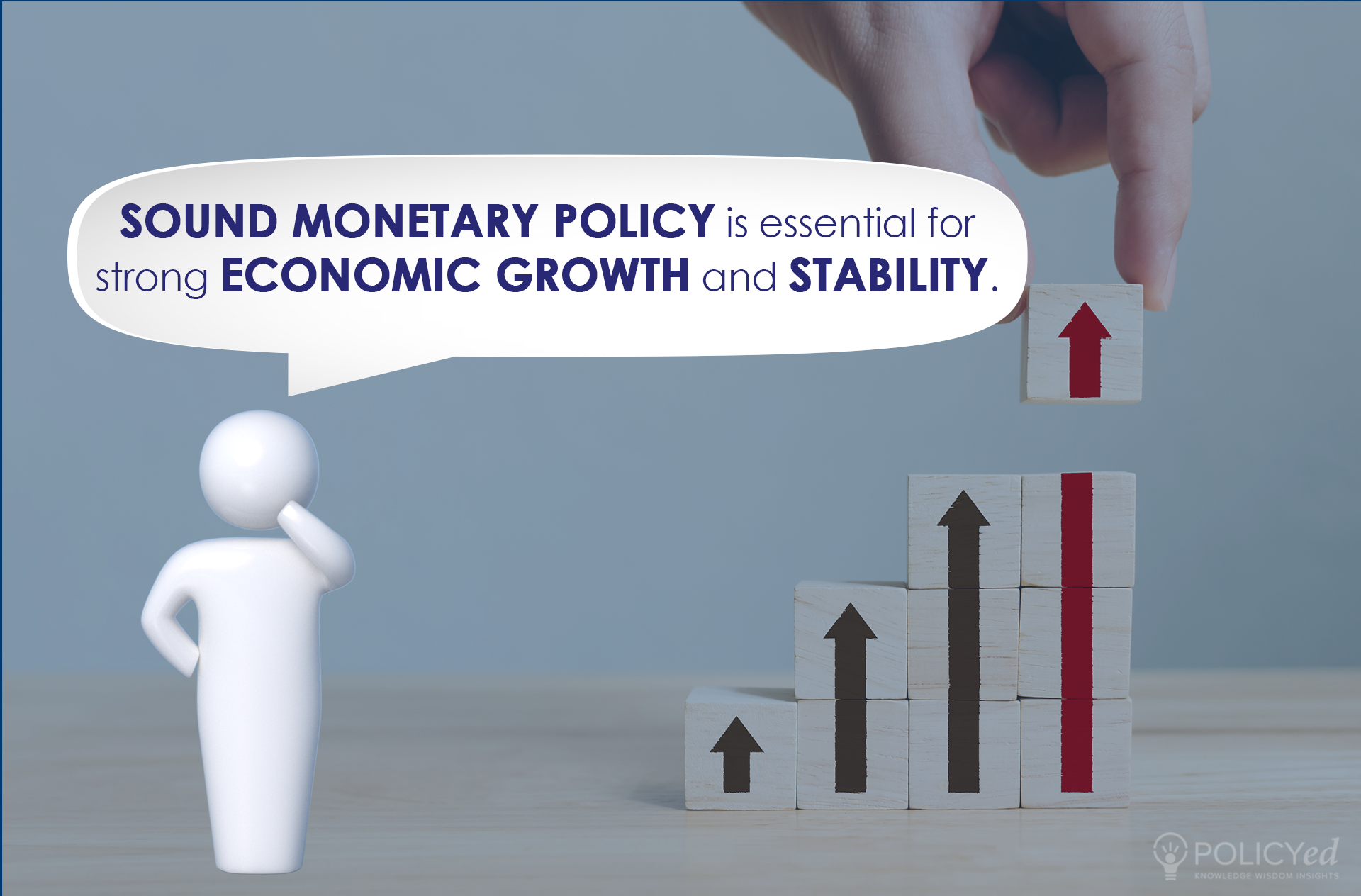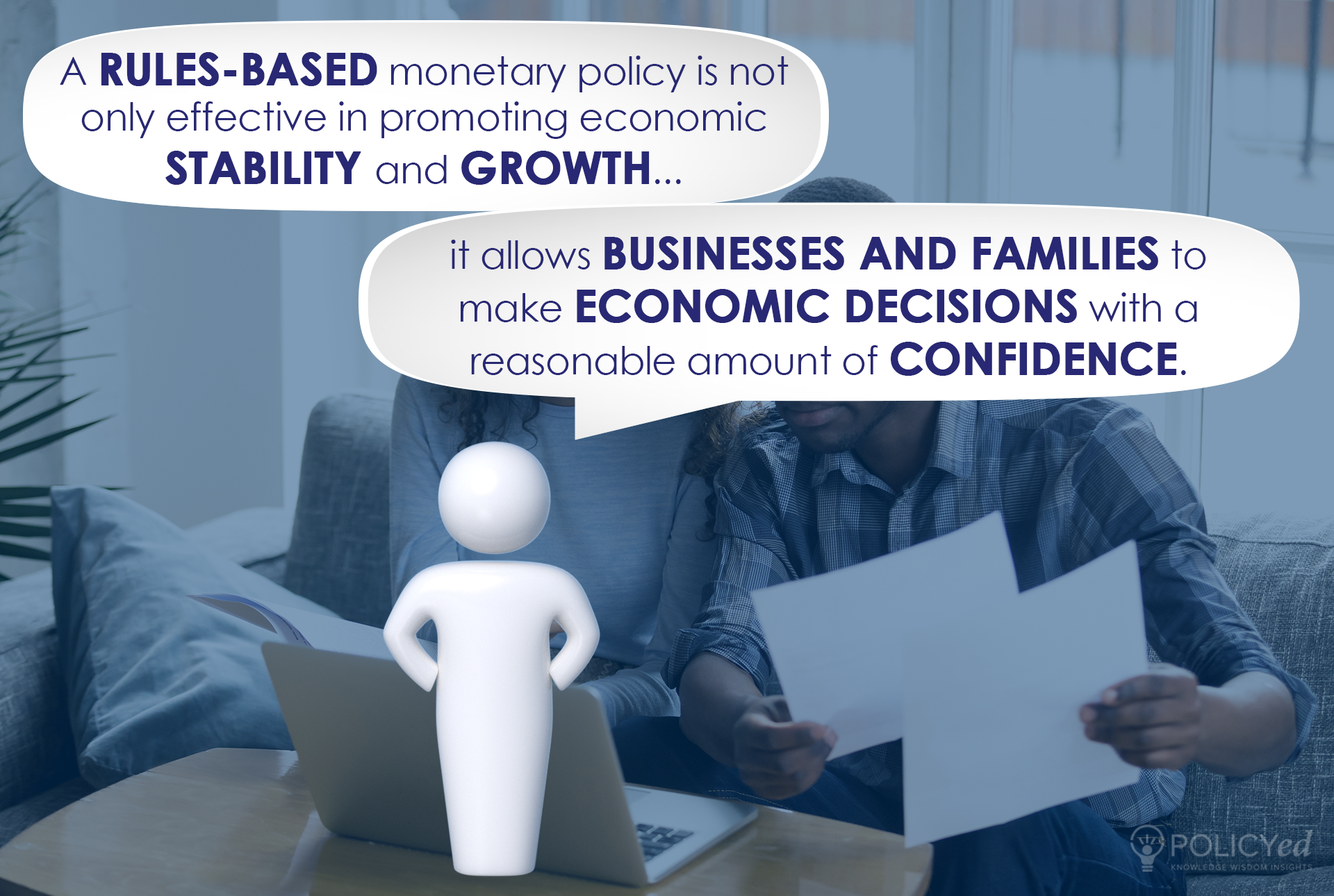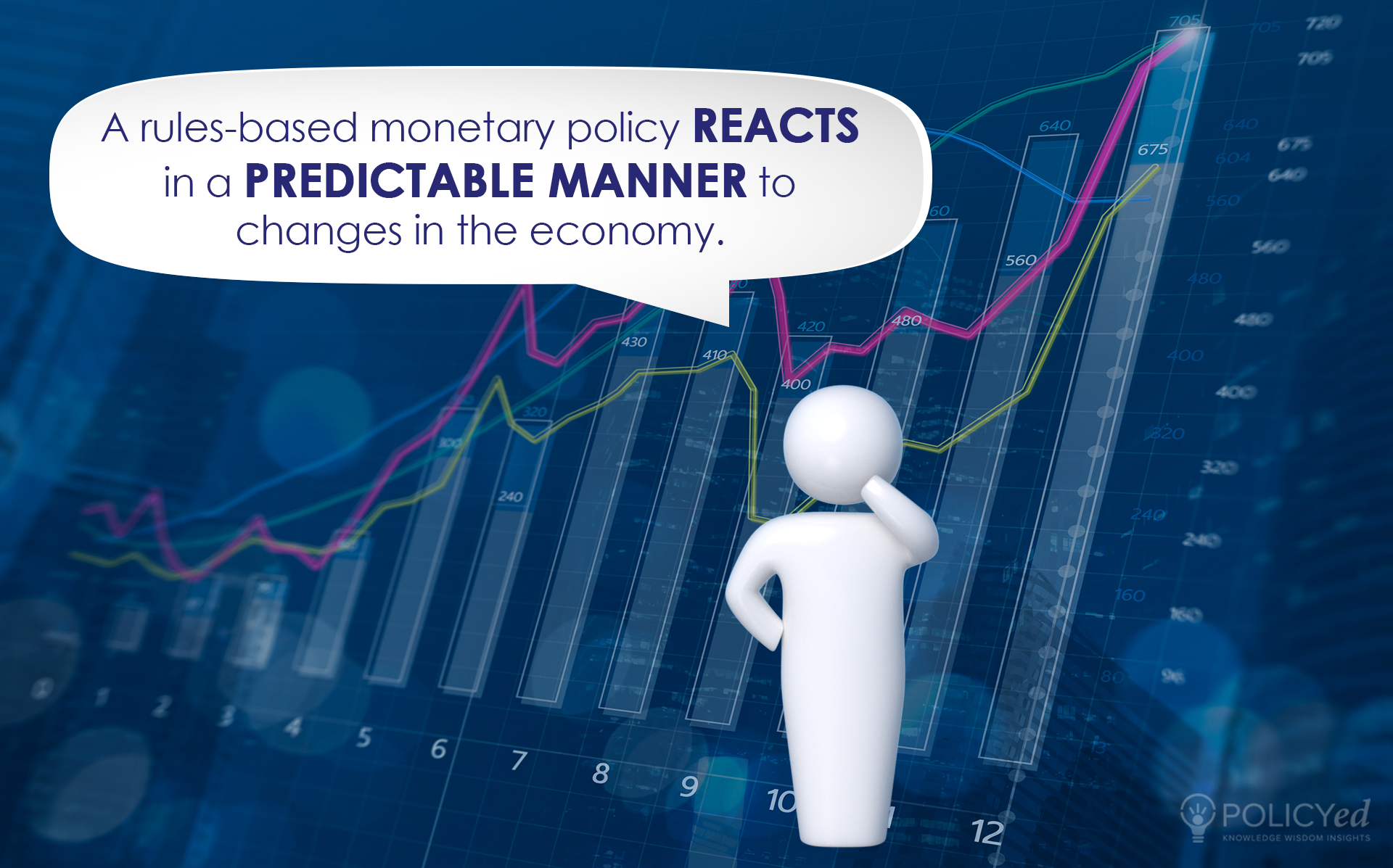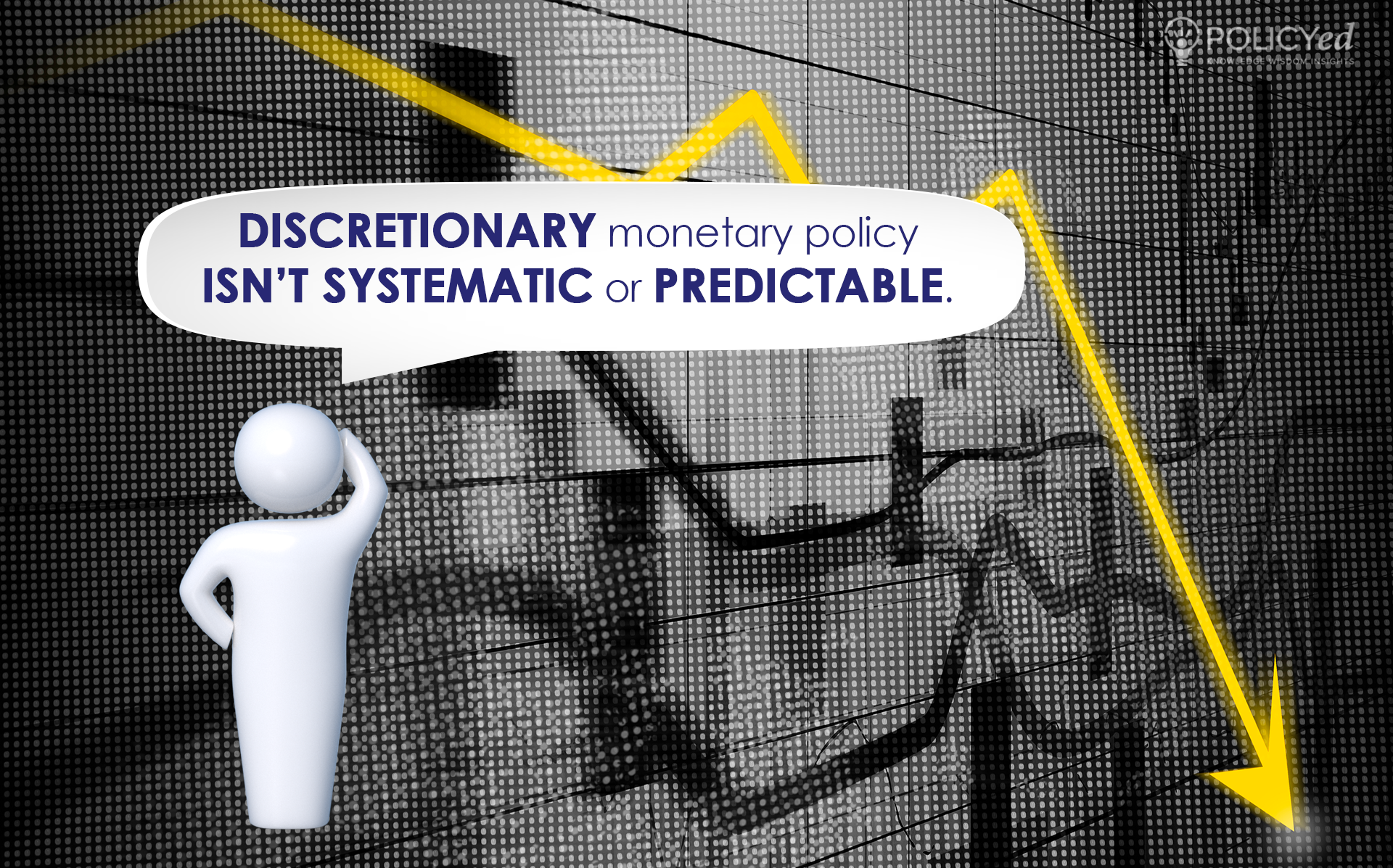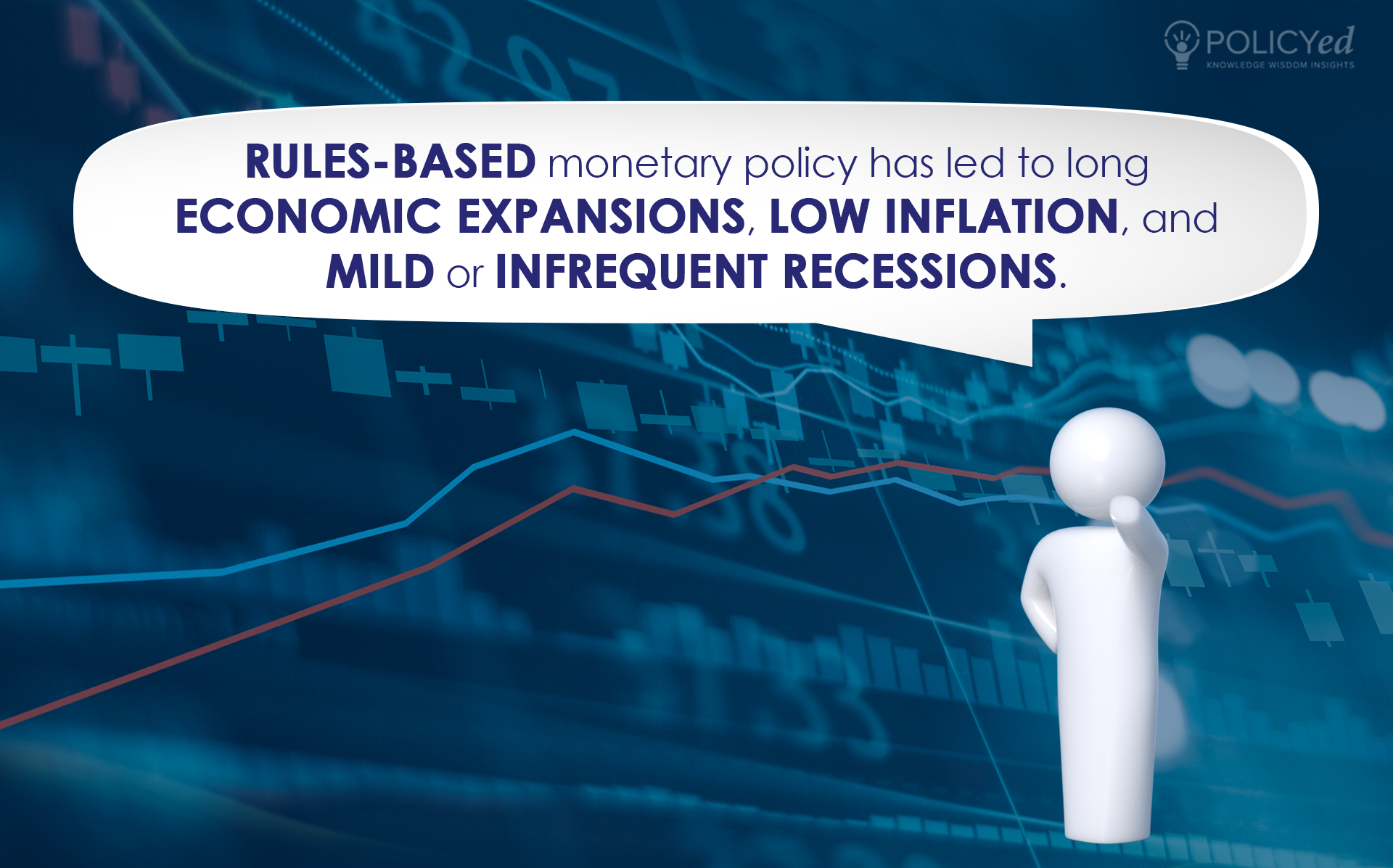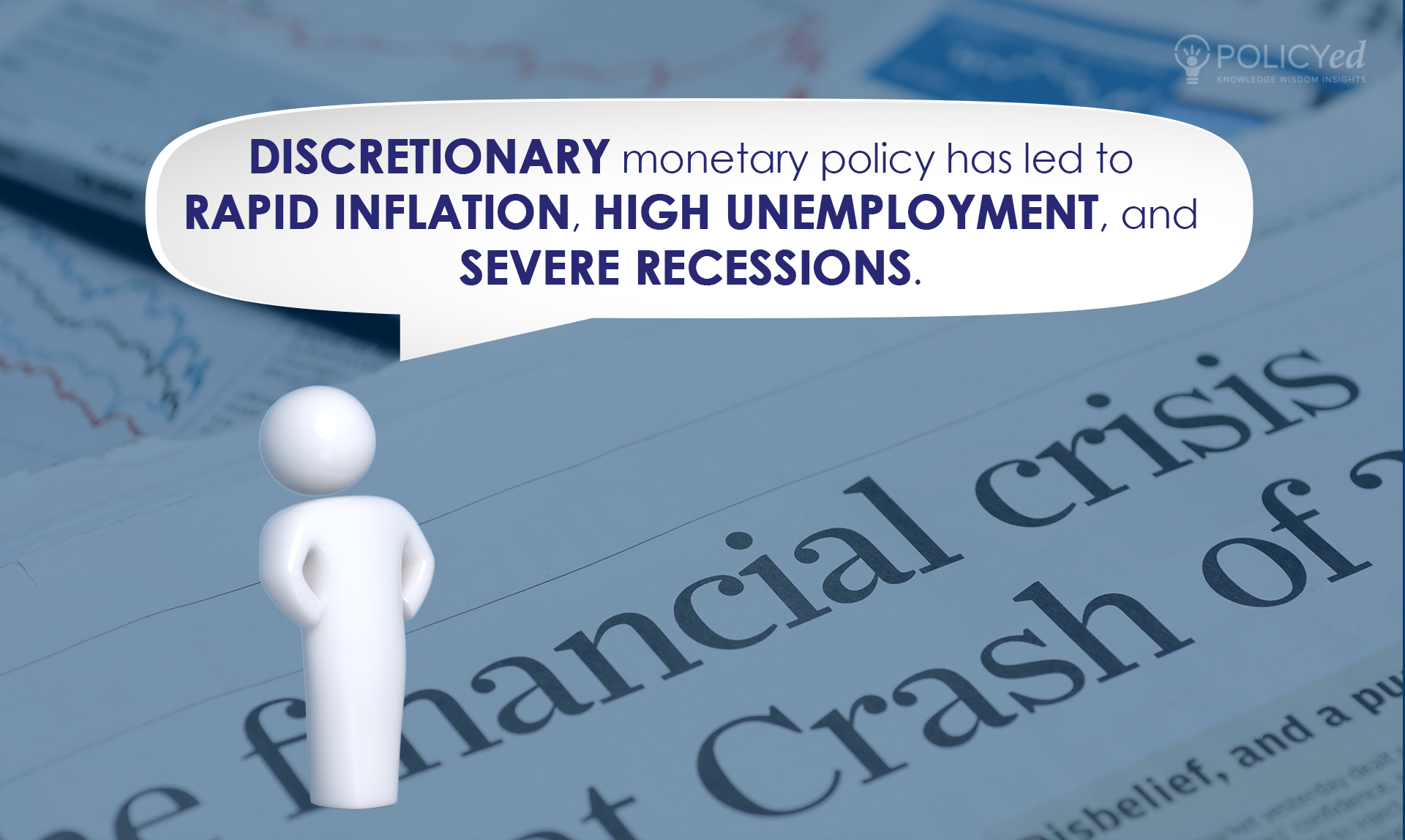Facts At Your Fingertips
Sound Monetary Policy
Sound monetary policy is essential for strong economic growth and stability. It is often only noticeable when we get it wrong, as we have several times in recent history. When the Federal Reserve follows a rules-based policy, the economy has a more robust foundation to operate from.
Promoting Economic Stability and Growth
A rules-based monetary policy is not only effective in promoting economic stability and growth, it allows businesses and families to make economic decisions with a reasonable amount of confidence. When monetary policy is stable, long-term borrowing costs are more predictable.
Rules-Based Monetary Policy
A rules-based monetary policy reacts in a predictable manner to changes in the economy. When inflation or economic output changes, there are pre-determined responses in place. A rules-based policy means that the central bank’s actions come as no surprise to those in the economy. Inflation that is too high is met with a higher Federal Funds Rate. Falling economic output is met with lower interest rates.
Discretionary Monetary Policy
Discretionary monetary policy isn’t systematic or predictable. While central bank actions in a rules-based policy are connected to changes in the economy, a discretionary monetary policy’s actions are harder to predict. Often, discretionary monetary policy is a sign that the central bank is responding to political pressure instead of economic changes.
The Experience of Discretionary Monetary Policy
Discretionary monetary policy has led to rapid inflation, high unemployment, and severe recessions. The actions of the Federal Reserve in the 1970s are a clear example of discretionary monetary policy. The Federal Reserve kept interest rates too low for too long in an effort to boost the economy, instead of prioritizing stability.

